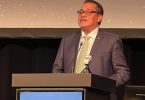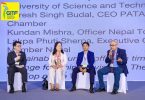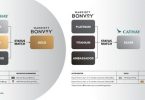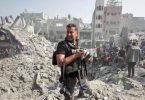GURGAON,INDIA — Doctors in Canada told Sandra Kniffen there was nothing more they could do for her.
The 57-year-old, who has multiple sclerosis, would just have to cope with poor balance, numb limbs and shaky hands that didn’t co-operate any more.
(eTN): Medical tourists not deterred by “superbug” threat | re-post license | post content
But when a friend recently told her about a new procedure being performed by doctors in India that might bring her some relief, Kniffen leapt at the chance to come here. She shrugged off recent reports of a drug-resistant superbug that reportedly originated in India and is spreading around the globe.
In a 700-bed hospital outside the Indian capital, doctors performed a venoplasty on Kniffen, a three-hour, $5,700 procedure to unblock her veins and arteries. Such blockages can limit the flow of blood to the brain. They affect motor skills, the circulatory system and are common in patients with MS.
On Monday, three days after her surgery, Kniffen was busy planning a quick trip to the Taj Mahal and joking with her daughters about being able to catch a package of gum one had tossed her way earlier in the day.
“People at home said I should wait, but I’m going to be 90 before this is available in Canada,” said Kniffen, a former nurse. “It’s not like we don’t have problems in Canada, too. We have had SARS and the H1N1 flu and I can honestly say this has been first-class treatment.”
Hospitals and medical industry officials in India say foreigners, Canadians included, continue to flock here for surgical procedures despite concerns over a newly published medical study that says a bug — New Delhi metallo-beta-lactamase-1, or NDM-1 — is showing up in some patients after they leave India.
The study, released by Cardiff University researchers and published in The Lancet, a respected medical journal, has sparked a backlash from government officials in India who say the country’s booming medical tourism industry has been unfairly targeted.
“The truth is this kind of drug resistant bug comes from drug overuse,” said Pradeep Thukral, founder of Safemedtrip.com, a consulting company in New Delhi that links foreign patients with about 10 Indian hospitals.
“Doctors in the West are so willing to keep giving more antibiotics with higher potencies and a patient’s resistance naturally goes down.”
Thukral said every patient bed at hospitals in the medical tourism business has antibacterial gels.
“Doctors and nurses use them before and after they touch a patient,” he said. “It’s become a rigid part of policy.”
Gurgaon, the New Delhi suburb where many foreigners go for procedures, can be disconcerting. Herds of cows and pigs lazily roam the roads. Medanta Mediciti, the hospital where Kniffen went for her surgery, is flanked by dingy huts made of scrap metal.
But it’s a different story inside Medanta, where doctors use equipment such as a 360-degree slice CT scan, a state-of-the art machine that shows doctors accurate images of patient’s arteries and organs.
“There are maybe two or three in the world,” Thukral said.
An estimated 500,000 foreigners travel to India each year for surgical procedures and officials said spinal and cosmetic surgeries are the popular choices, although treatments to provide relief for MS are becoming more common. Medical tourists come here for treatment that have long queues in Canada, as well as for procedures that have not been approved elsewhere.
The Confederation of Indian Industry has said medical tourism could generate $2.3 billion in annual revenue by 2012.
“You have Sick Kids Hospital in Toronto which is really a centre of excellence,” Thukral said. “But we have 50 hospitals of this caliber and within two years, we’ll have 50 or 100 more.”
Doctors who graduate after seven years of medical school make about $400 a month, which makes that kind of expansion possible, he said, smiling as he held up a BlackBerry to show a message indicating six more Canadians had checked into Medanta for procedures.
Calgary’s Stu Taylor arrived in New Delhi last week with his wife Maureen, who, like Kniffen, had surgery to provide some relief from her MS. Taylor said he and his wife were pleased with her procedure, although they were concerned that nurses gave her needles without first putting on gloves.
“But there was nothing dramatically distressing,” he said.
Sharon Fehr, of La Crete, Alta., was another Canadian in New Delhi for a procedure after the superbug warnings.
“I have really been so pleased with how it’s gone,” she said, noting she’s only been taken aback by small cultural differences, such as being served hot milk on her cereal.
“This is a tragic disease and I had no hope in Canada,” she said. “I didn’t have time to wait decades for help. India has given that to me.”





















